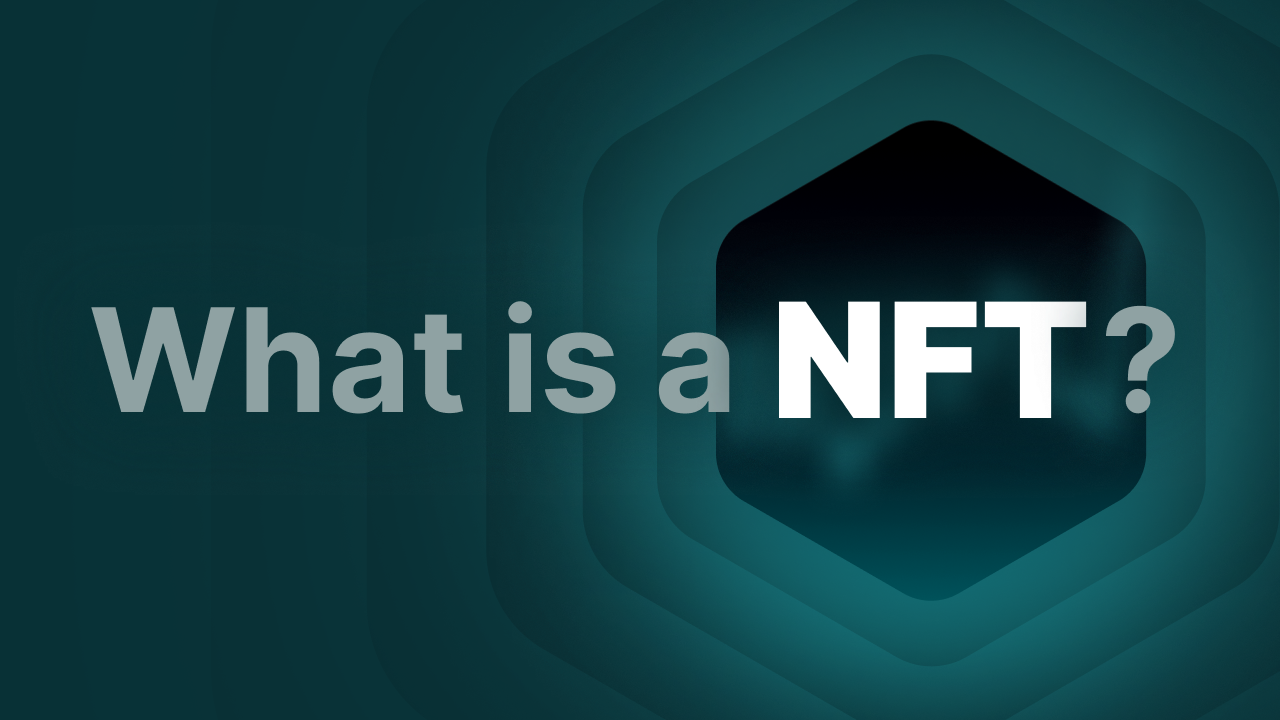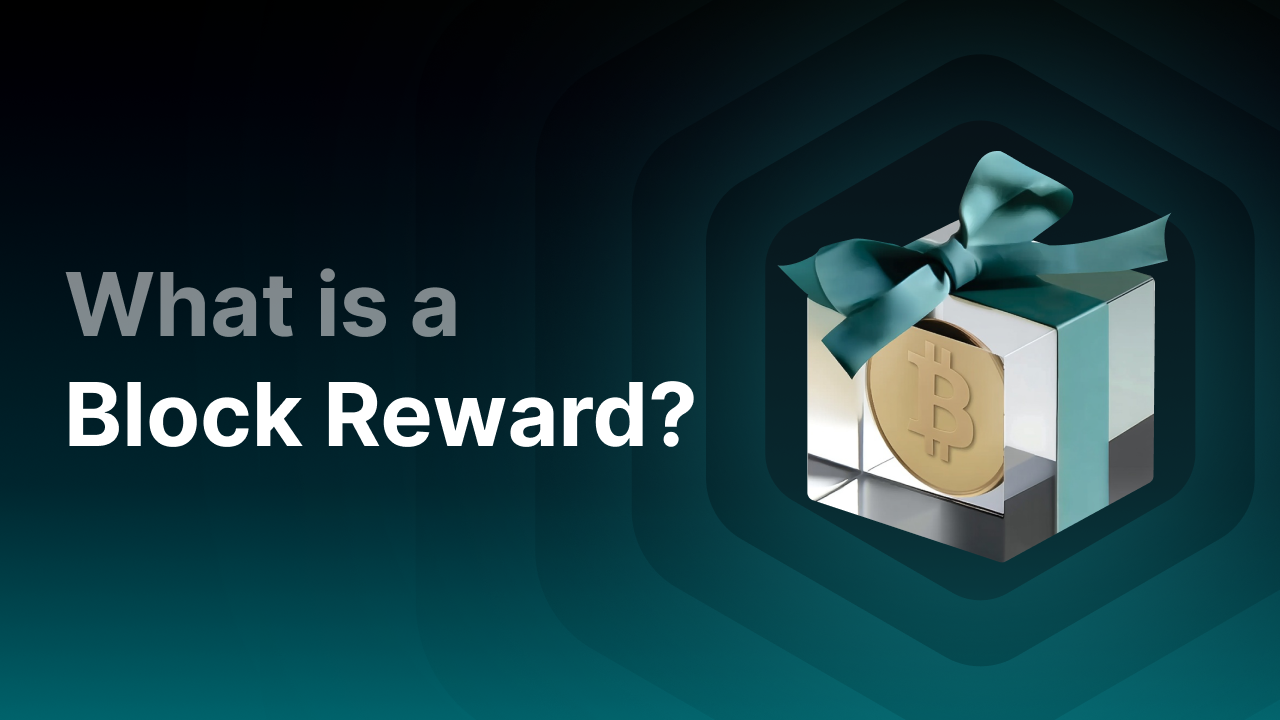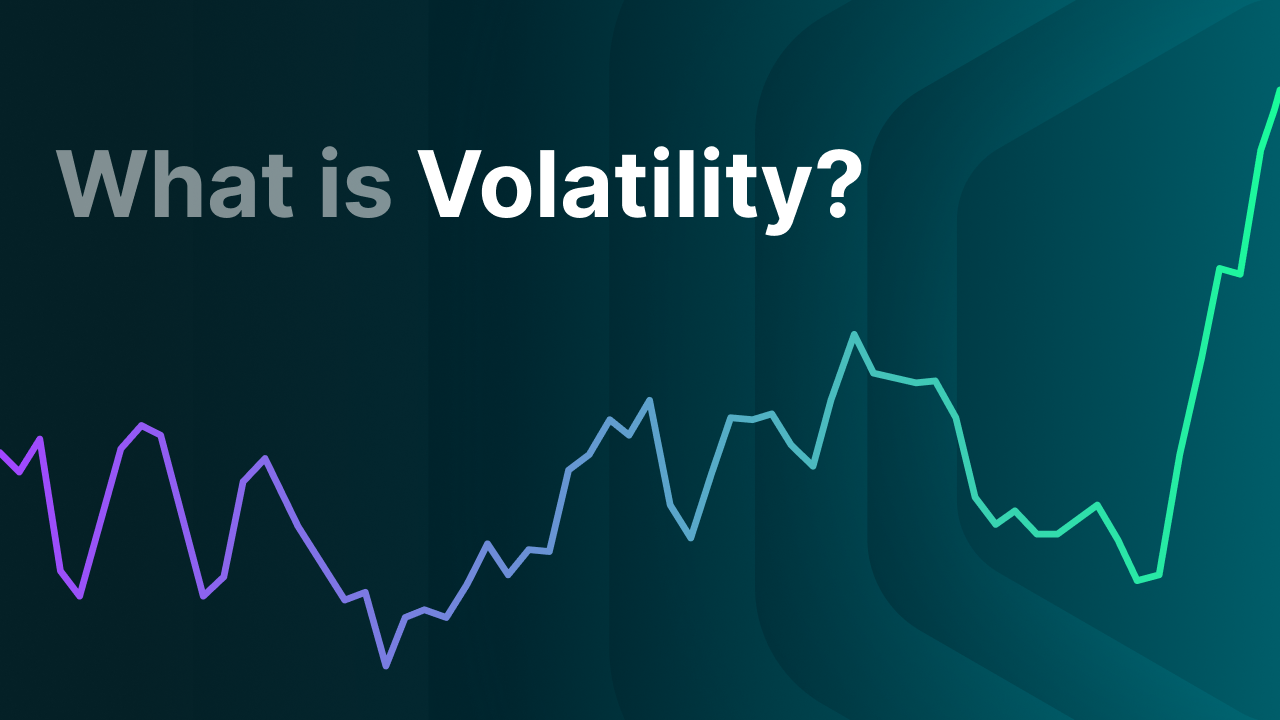Everything you need to know about Non-Fungible Tokens

What is a non-fungible token (NFT)?
Non-fungible tokens (NFTs) are assets such as digital art or digital content that are tokenized through a blockchain. The tokens have a unique identifier and are assembled based on metadata. These tokens are then stored on the blockchain. So you can think of an NFT as a digital collection.
Most cryptocurrencies are fungible, which means you can chop them into very small pieces. For example, you can buy or sell 0.003245 Bitcoin. An NFT, on the other hand, is almost always 1 of itself. So you generally can't buy or sell half an NFT.
Cryptocurrencies are similar to NFTs in that both are secured on blockchain networks. The main difference is that cryptocurrencies are fungible or redeemable. While there is no significant difference between one bitcoin and another, no two NFTs are identical.
Key Takeaways
- NFT stands for non-fungible token: a unique digital proof of ownership.
- NFTs run on blockchains and are often used for digital art, collectibles and in games.
- You can buy, sell or hold NFTs, usually with crypto such as Ethereum.
- Value depends on scarcity, hype, community and utility.
- They are popular, but also speculative and risky - so be careful.
History of Non-Fungible Tokens (NFTs)
NFTs may have been around longer than you think. The first NFT was sold in 2014. This one was designed by Kevin McKoy. It was officially created on the Namecoin blockchain, and later re-minted on Ethereum.
Most NFTs on Ethereum use the ERC-721 standard. This standard defines, among other things, how ownership is transferred, how transactions are confirmed and how applications should process secure transfers. Later, the ERC-1155 standard was also introduced. This allows multiple NFTs to be bundled into a smart contract, this ensures that transaction costs are lowered.
People who have been in the cryptocurrency market for a bit longer may remember it, the CryptoKitties. This was one of the first really popular NFT projects, built on the Ethereum blockchain. They were images of digital cats with certain properties, some had very rare properties and these were naturally worth more. The cats could even reproduce, this allowed you to create another new cat with new properties. The NFTs became so popular that millions in Ethereum was traded within an Easter week.
In 2017, there was another such hype. Namely Decentraland, this was a game where people could buy and sell pieces of digital land. So you owned that piece of land just like you own a house in the real world. To some this sounds very crazy, but to many investors this was an interesting new development.
After the success of the first NFTs on Ethereum, other blockchains also began to develop their own NFT protocols. Today, NFTs are here to stay. There are thousands of NFT projects on various blockchains and this number continues to grow every day.
How NFTs work
NFTs are created through a process called minting, in which the item's info is encrypted and stored on a blockchain. Broadly speaking, the minting process involves creating a new block, checking the NFT info through a validator and closing the block. This minting process often uses smart contracts that assign ownership and control NFT transfers. So when you buy an NFT, you actually receive a kind of digital certificate of ownership.
When tokens are minted, they are given a unique identifier that is linked directly to a blockchain address. Each token has an owner and the ownership information (i.e., the address where the minted token is located) is public. Even if 10,000 NFTs of exactly the same item are minted (such as tickets to a movie), each token has a unique identifier and can be distinguished from the others.
Many blockchains can create NFTs, but they may have a different name. On the Bitcoin blockchain, for example, they are called Ordinals. Like an Ethereum-based NFT, a Bitcoin Ordinal can be bought, sold and traded. The difference is that Ethereum creates tokens for the asset, while Ordinals have serial numbers (called identifiers) assigned to Satoshi's (the smallest bitcoin denomination). NFTs are therefore mainly used on Ethereum or other layer-2 protocols.
Blockchain and fungibility
Like cash, you can simply exchange most crypto currencies with each other; one bitcoin is worth as much as another bitcoin on an exchange. But with NFTs, it works differently. For example, one NFT might cost €10, while another (which is a bit rarer) might be worth €100.
You can actually think of an NFT as a kind of digital passport for a unique item. Each NFT is different and has its own identity that you can't simply copy or transfer. And sometimes you can even combine two NFTs to make a new, unique NFT. In the crypto world, they call that "breeding.
Examples of NFTs
Much of the NFT market is focused on digital art and collectibles, but the NFT market has since matured and there are many more options today. Below are some categories:
- Photography: Photographers can tokenize their work and offer ownership of all or part of it.
- Sport: Collections of digital art based on celebrities and sports personalities.
- Exchange Cards: Tokenized digital trading cards. Some are collectibles, while others can be used in video games (think rare items).
- Membership: NFTs that may represent membership or provide access to specific content.
- Virtual Worlds: NFTs for games allow you to own everything from avatar clothing to digital property (think Decentraland)
- Art: A general category of NFTs that includes everything from pixel art to abstract digital art.
- Collectibles: Bored Ape Yacht Club, Crypto Punks and Pudgy Panda are some examples of NFTs in this category.
- Domain Names: NFTs representing ownership of domain names for your website(s).
- Music: artists can tokenize their music and give buyers the rights they want.
Benefits of NFTs
The advantage of NFTs is that you can tokenize property without using a third party or intermediary. So you can digitize your possession and trade director. So NFTs can be digital or physical artworks, as well as a possession such as a festival ticket or entrance ticket. So you as an artist, artist or trader can easily and directly connect with your target audience without using third parties.
Invest
NFTs can also be used to streamline investments. For example, consulting firm Ernst & Young developed an NFT solution for one of its investors in exclusive wines, storing wine in a secure environment and using NFTs to protect provenance.
There are also parties that tokenize real estate. For example, a property can be divided into several parts, or an entire building can be sold as an NFT. Of course, this is not yet common in the housing market, but there are options today that make this possible. For example, a Dutch entrepreneur sold his house for 21 Bitcoins (then worth about $40,000 each). Property trading (as well as the bureaucratic part of it) can then be simplified by including relevant metadata in a unique NFT linked only to the relevant part of the property.
NFTs can also show that you own (a piece of) a company, just as with shares. Normally, shares are already recorded in registers with info like who owns it, when it was issued, the number of the certificate and how many shares it is. A blockchain actually works like such a register, but digitally, distributed and well secured. So when you use NFTs to represent shares, you're essentially doing the same thing. The big advantage? Thanks to smart contracts, the whole process of transferring ownership can happen automatically. As soon as someone sells such an NFT share, the blockchain takes care of the rest. Nice and easy.
Security
NFTs are also super convenient when it comes to identity security. If you put personal info on the blockchain, no one can change it. The info is recorded on the blockchain, and so as long as the blockchain is secure, the information on it is also reliable.
In addition, NFTs make it easier to invest together. For example, you can split an expensive work of art into smaller pieces via tokenization. Then you don't have to buy the whole painting on your own; you can just own a piece of it. In this way, several people can become joint owners of a physical object.
Disadvantages of NFTs
NFTs may sound like a panacea, but there are drawbacks. One of the biggest challenges is that the value of NFTs often fluctuates widely. What is worth a lot today may suddenly be worth a lot less in a few months or years from now. The opposite is also possible, of course, but this is something you should take into account. The market is still young and quite speculative, so it is difficult to estimate what an NFT is really worth in the long term.
NFT Storage
Another problem is that while NFTs are technically on the blockchain, the files that really matter (such as an image, video or certificate) are usually stored somewhere else. If this is done through central parties then this can cause problems. So if that external storage disappears or goes offline, you can still own the proof, but without the associated content. That's like having a ticket to a concert that never takes place. There are of course decentralized ways to solve this, however, not every NFT project does this.
Sustainability
There are also questions in terms of sustainability. Many blockchains running NFTs (such as Ethereum) use a lot of energy. While steps are being taken to improve this, it remains a criticism by many people.
Fraud and Scams
Finally, there is the risk of scams and fraud. Because it is a relatively new world and anyone can easily create and sell NFTs themselves, there are also many scammers active. So always pay close attention before buying an NFT. Can the party be trusted? Is it a reliable platform you are trading on, and do you believe in its future? These are the kinds of questions you should ask yourself before making an investment.
So NFTs certainly offer opportunities, but it is still important to read up well before you start trading NFTs.
Generative NFTs
Generative NFTs are a special kind of NFTs that are automatically generated using code. Instead of an artist creating each design by hand, an algorithm is used to create thousands of unique variations based on a number of preset assets. Think of things like background color, accessories, facial expression, clothing, objects, and so on. So the artist does create all the assets that are used, only mixing them together is done by an algorithm. In addition, there are often percentages attached to these assets, for example, a certain pair of sunglasses may have a drop-chance of 1%, while another pair of sunglasses has 16% drop-chance. So you get unique NFTs and at the same time a system is put in place that guarantees a valuation.
A well-known example is the Bored Ape Yacht Club (BAYC). These are pictures of monkeys, but each monkey looks slightly different. Some have sunglasses, others a hat or a cigar. A total of 10,000 of these monkeys have been generated, and they are all unique. The rarer the combination of features, the more valuable the monkey often is.
The Bored Apes have become wildly popular. Some NFTs from the collection have sold for hundreds of thousands of dollars, and during the peak period, apes even went for over a million dollars. Famous people like Eminem, Snoop Dogg and Neymar bought one, adding to the hype.
So the idea behind generative NFTs is simple: you use clever software to create a huge collection of unique digital objects, and they can then be sold as NFTs. They often come with additional benefits, such as access to exclusive online clubs, events or voting rights in the community.
Generative NFTs cleverly combine technology, art and community - but as with everything in the NFT world: the value can fluctuate considerably and not every generative collection will be a success.
Well-known NFT trading platforms.
If you want to buy or sell NFTs you will need to use an NFT marketplace. There are hundreds of platforms on which to do this, and it also depends on the blockchain you are operating on. So always research popular NFT trading platforms before you get started. After all, some platforms only support Ethereum, while others support Solana or Bitcoin. Below is an overview of the largest and best-known NFT marketplaces, based on trading volume and popularity.
1. Magic Eden
Supports: Solana (SOL), Ethereum (ETH), Base (BASE), Arbitrum (ARB), Polygon (POL), Apecoin (APE), Bitcoin (BTC), sei Network (SEI), Binance Smart Chain (BSC), Berachain (BERA), Abstract (ABS).
Why popular: Lots of offerings, fast and easy to use
Magic Eden started as a platform for NFTs on the Solana blockchain, but now supports other blockchains such as Ethereum and even Bitcoin. It is a fast app that is easy to use.
2. Blur
Supports: Ethereum
Why popular: Aimed at serious traders
Blur is a platform made for Ethereum. Blur controls much of the daily volume on the Ethereum network, and thus targets serious NFT traders.
3. OpenSea
Supports: Ethereum, Polygon, Klaytn, Arbitrum, Optimism, Avalanche, Zora Network, Base, Blast, Sei, B3, Berachain, Flow, ApeChain, Soneium, Shape, Unichain, Ronin and Abstract.
Why popular: Largest selection, easy to use and one of the first NFT platforms out there.
OpenSea is one of the oldest and best-known platforms. Here you can find everything: art, collectibles, gaming items, you name it. It's a great place to start, especially if you buy or sell NFTs on Ethereum or Polygon.
4. Tensor
Supports: Solana
Why popular: Low cost, super fast, attractive to active traders
Tensor is an emerging platform on the Solana blockchain. It is fast, cheap and especially popular with people who often buy or sell NFTs. It has a somewhat more technical look (unless you turn on the lite version, which is aimed at beginners), while offering many useful features.
How do you choose the right platform?
Step 1: See which blockchain your NFT is on.
Step 2: Choose a marketplace that supports that blockchain.
Step 3: Consider cost, speed and ease of use.
For beginners, OpenSea is a good start. If you work a lot with Solana, Magic Eden or Tensor are better suited. If you want to trade Ordinals on Bitcoin then Magic Eden is best for you.
Conclusion
NFTs (non-fungible tokens) are unique digital property tokens on the blockchain. They make it possible to buy or sell art, music, and even real estate digitally. NFTs differ from regular crypto in that they are not divisible, so each token is unique. They open new doors for artists, artists and investors, but also carry risks such as fluctuations in value and fraud. In short, NFTs offer a lot of potential, but still carry risks. So always do your own research before getting in on such trends.



__01KC926A15P1A0X3VR6DBBV1FK.png)
